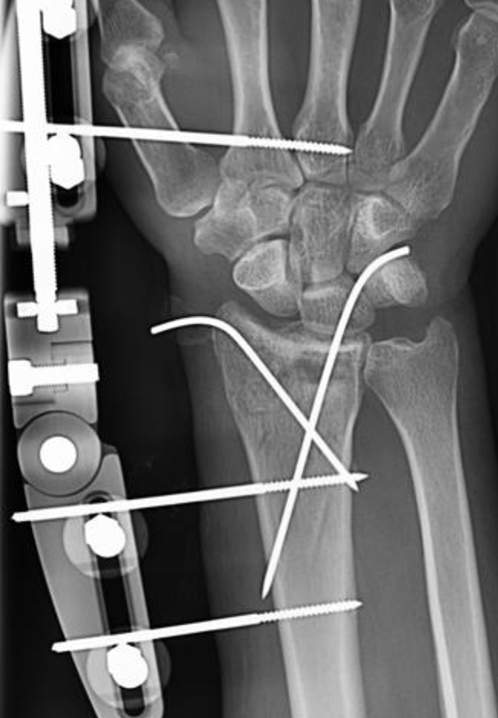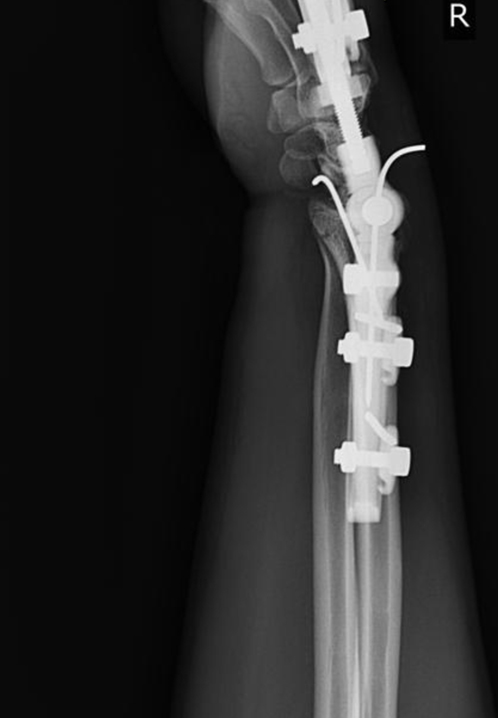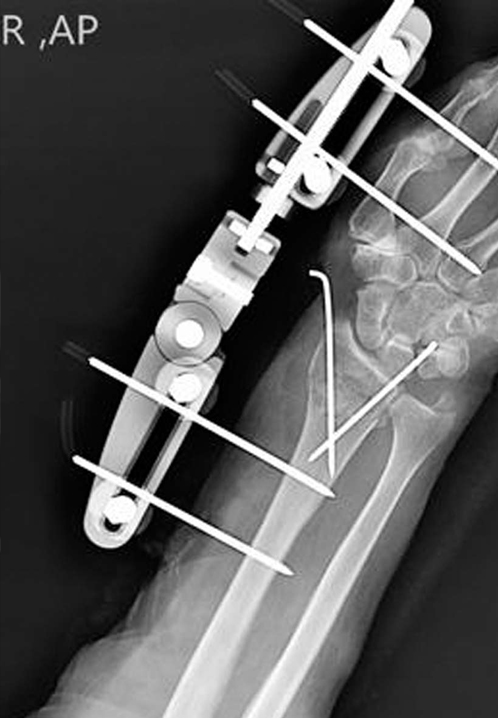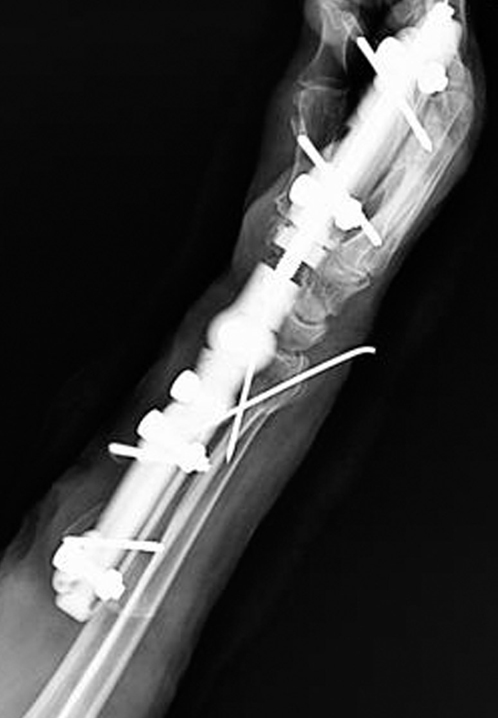Externals
Dynamic Distal Radius External Fixator

Distal radius fractures are among the most common fractures in all External fixation is one of the best treatment options for management of distal radius fractures. It is useful especially in cases with articular or metaphyseal comminution. Ligamentotaxis is the main mechanism for closed reduction of distal radius fractures. The best reduction is achievable when the axis of traction is ulnar and volar deviated perpendicular to distal radius articular plain. Volar tilt and radial inclination are two important radiologic parameters that determine the orientation of distal radius articular surface. One of most important aspects of dynamic distal radius external fixator is adjustment of traction force axis perpendicular to articular plain.
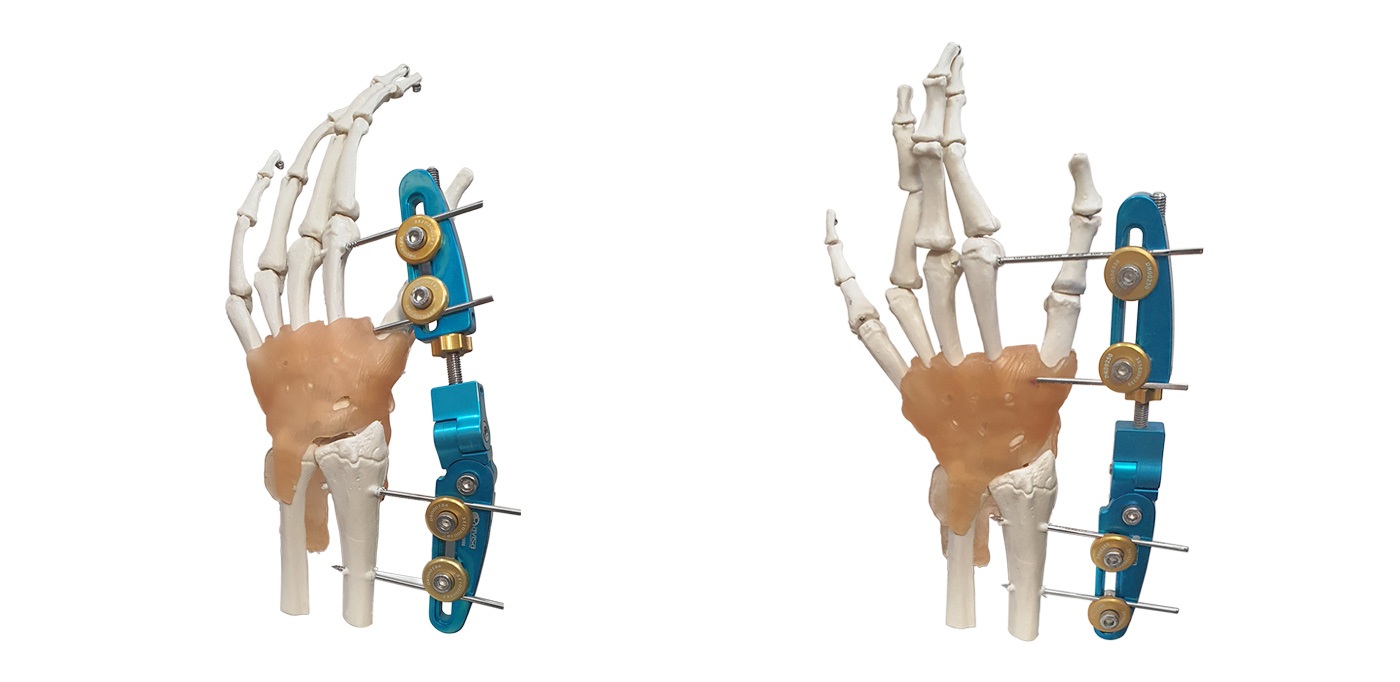
Fine tuning of articular parts of external fixator will be performed according to normal side radiologic parameters. Another important item in closed treatment of distal radius fractures is tension over tendons. Overdistraction of fracture may lead to tension over tendons especially extensors. In these circumstances the finger range of motion will be diminished. Another important aspect of dynamic distal radius external fixator is “gradual distraction” facilitates by distractor nut. The last important aspect of dynamic distal radius external fixator is opportunity to insert schanz pins in any desired distance or direction due to independent clamp system in proximal or distal part of fixator.
Bulets

